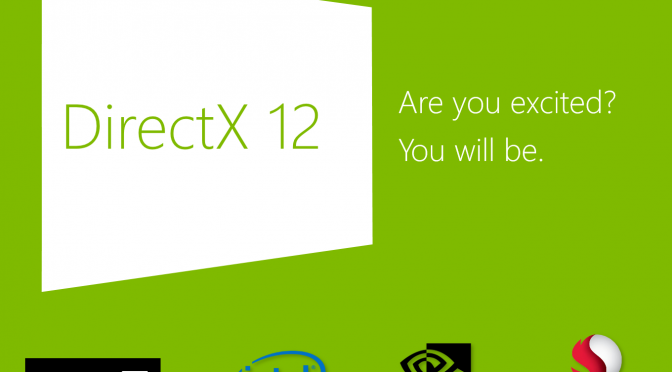AMD explained today two major features that will be included in Microsoft’s new API, DirectX 12. These two features are Async Shaders and Multi-Threaded Command Buffer Recording. DX12 promises to give extra life to all available older multi-core CPUs, and these two features will be essential to that task.
As AMD claimed, Async Shaders is a feature allows a game engine to execute GPU compute or memory activities during “gaps” in the graphics workload presented by a game.
“In DirectX 12 Async Shaders supercharge work completion in a compatible AMD Radeon GPU by interleaving these tasks across multiple threads to shorten overall render time. Async Shaders are materially important to a PC gamer’s experience because shorter rendering times reduce graphics pipeline latency, and lower latency equals greater performance. “Performance” can mean higher framerates in gameplay and better responsiveness in VR environments. Further, finer levels of granularity in breaking up the workload can yield even greater reductions in work time.”
AMD then talked about Multi-Threaded Command Buffer Recording, and explained the great benefits that this feature will bring to all DX12 games.
In DX12, the command buffer behavior is radically overhauled in five key ways:
- Overhead is significantly reduced by moving driver and API code to any available CPU thread
- The absolute time required to complete complex CPU tasks is notably reduced
- Game workloads can be meaningfully distributed across >4 CPU cores
- New “bandwidth” on the CPU allows for higher peak draw calls, enabling more detailed and immersive game worlds
- All available CPU cores may now “talk” to the graphics card simultaneously
Oxide’s Ashes of the Singularity, an upcoming strategy game that already utilizes all 8 cores of an AMD FX-8370 processor, will be one of the first games showcasing the benefits of Multi-Threaded Command Buffer Recording.
As AMD and Oxide noted, Ashes of the Singularity offers image quality and resolutions that—in the words of the developer’s CEO Brad Wardell—are “not even a possibility” under DirectX 11.
You can read AMD’s full article about DX12 here.

John is the founder and Editor in Chief at DSOGaming. He is a PC gaming fan and highly supports the modding and indie communities. Before creating DSOGaming, John worked on numerous gaming websites. While he is a die-hard PC gamer, his gaming roots can be found on consoles. John loved – and still does – the 16-bit consoles, and considers SNES to be one of the best consoles. Still, the PC platform won him over consoles. That was mainly due to 3DFX and its iconic dedicated 3D accelerator graphics card, Voodoo 2. John has also written a higher degree thesis on the “The Evolution of PC graphics cards.”
Contact: Email



